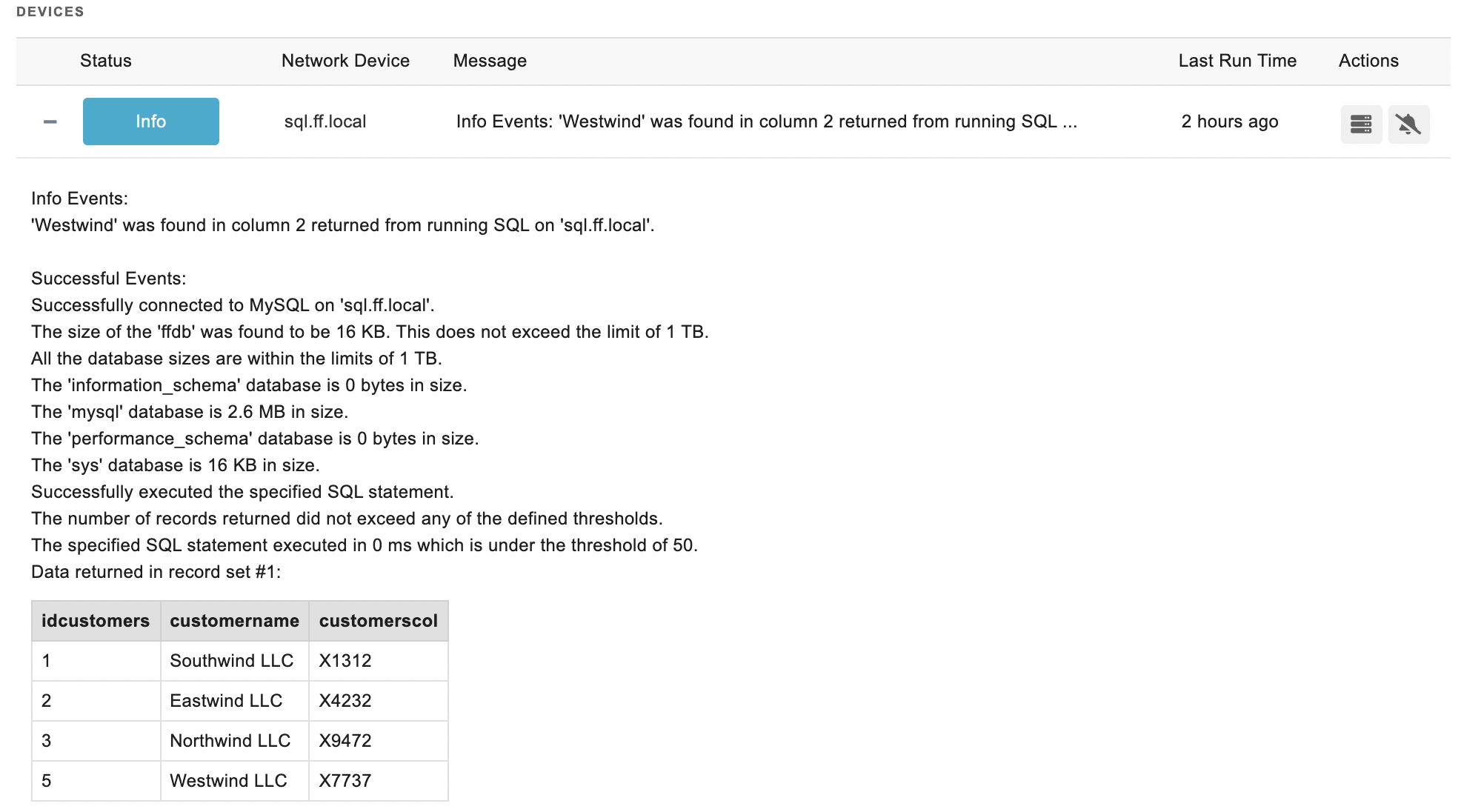MySQL Event Monitor Reference Guide
notitie
Overview
The MySQL Event Monitor ensures that MySQL databases are functioning correctly, monitoring database size, and executing SQL statements to verify operational integrity. This monitor is crucial for database administrators to maintain the health and performance of MySQL databases.
info
Use Cases
- Monitoring MySQL database sizes to manage storage efficiently.
- Executing and validating SQL queries and stored procedures.
- Tracking and alerting on the performance of SQL queries.
Before You Start
Ensure the latest MySQL Connector/ODBC driver is installed on your system to allow the event monitor to connect to your MySQL databases. Download the 64-bit version from the official MySQL website.
Monitoring Options
Configuration
- Driver Version: Specify the exact name of the MySQL ODBC driver installed on your PIM+ system, typically found via the ODBC Datasource Administrator in the Windows Control Panel.
- TCP/IP Port Number: Default is 3306, adjustable based on your MySQL server configuration.
waarschuwing
Alerts
- Alert if the database cannot be contacted: Configurable to alert based on connection issues.
- Alert if any database exceeds a specified size: Set size thresholds to receive alerts for databases that grow beyond expected dimensions.
- Alert if a specific database exceeds a specified size: Monitor individual databases for size constraints.
SQL Query Execution
- Run a SQL statement: Option to execute a SQL statement or stored procedure.
- Database Name: Specify which database the SQL will run against.
- SQL Statement: Input the SQL code to be executed.
- Alert if query execution time exceeds specified limits: Monitor and alert based on the execution time of the SQL query.
- Show the first [#] result rows in all notifications: Include SQL query results in notifications for further analysis.
Search and Validation
- Alert based on text found in query results: Configure alerts based on specific text found within SQL query results.
- Search Text: Define the text string to search within the query results.
- Number of Rows to Check: Limit the number of rows inspected for the specified text.
- Column Number to Check: Specify which column to search for the text.
Authentication and Security
- Authentication Profile: Select a profile that contains credentials with appropriate access to the monitored database.
Protocols
Data Points
- This monitor event generates the following data points:
| Data Point | Description |
|---|---|
| Connect Time | The time it takes for the event monitor to connect to MySQL. |
| Database Size | The detected size of the database. |
| Statement Exec Time | The time it took to run your command and receive results. |
Sample Output
